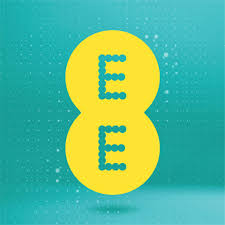
EE is number one mobile network within the UK, regularly coming out on top in surveys be that high speed (40Mbps), low latency (<36), or coverage by population (99%) or coverage by geographical area (94%-England, 89%-NI, 77%-Scotland, 86%-Wales)
EE was established as a merger of T-Mobile and Orange in the UK. Both T-Mobile and Orange came into the (2G) mobile phone market when OfCom wanted to expand the number of operators from 2 to 4. For a while EE was used as the trading name for the 4G operation only following the merger, but now the EE name is used for all mobile operations by the company (BT).
The frequencies that EE use are :
| 700MHz | Band 29 | 5G |
| 700MHz SDL | Band 67 | 5G |
| 800MHz | Band 20 | 4G |
| 1800MHz | Band 3 | 2G + 4G |
| 2100MHz | Band 1 | 3G + 4G |
| 2600MHz | Band 7 | 4G |
| 3400MHz | Band 78 | 5G |
| 3600MHz | Band 77 | 5G |
Orange and One-2-One were introduced into the 2G market as a result of the auction of frequency. One-2-One initially ran their network within the M25 but later expanded this to the whole of the UK. One-2-One was acquired by T-Mobile with a subsequent name change. These two companies are the forerunners of EE
Both Orange and T-Mobile purchased and ran successful 3G networks. A merger between the companies and a purchase by BT led to EE. Initially BT ran these two network under their own branding but later merged then into EE. EE switched off their 3G network in late 2024
EE were the first company to run 4G, using their spare capacity, obtained from the merger of the T-Mobile and Orange companies, at 1800MHz. They also purchased further frequency to run 4G in the auction. They now offer 4G over most of the UK and 99% of the population.
EE were the first company to release 5G on their network (30-May-2019) in parts of the big UK cities - London, Edinburgh, Birmingham, Manchester, Cardiff and Belfast. Now their 5G offerring is available over 60% of the UK population (2023-1-18). They are using the 700Mhz, 3.4GHz / 3.6GHz bands. EE have been caught up in the argument about Chinese suppliers on the 5G network which has led to them stripping out Huawei equipment from their network, at great cost.
EE is owned by BT who had previously owned some mobile phone bandwidth themselves. As part of the merger agreement to create EE, they had to release some of their bandwidth to their competitors, most notably Three.
EE, or more correctly BT, have a large share of the whole digital communications market with broadband, trunk networks, as well as their mobile network. Additionally BT has their own media operation including TV, Sports and Film. This gives BT a dominant position in this integrated market with a fear of a near monopoly. Already the "last-mile" operation of OpenReach has been split away from BT but still owned by the company.
The EE company inherited a very large number of High Street shops from T-Mobile and Orange. These have been branded as EE and their High Street portfolio rationalised to reflect the current market environment. EE sell mobile phones and devices for their EE network both in their stores.
© mobilephonetechnology.co.uk all rights reserved 2017-2025

